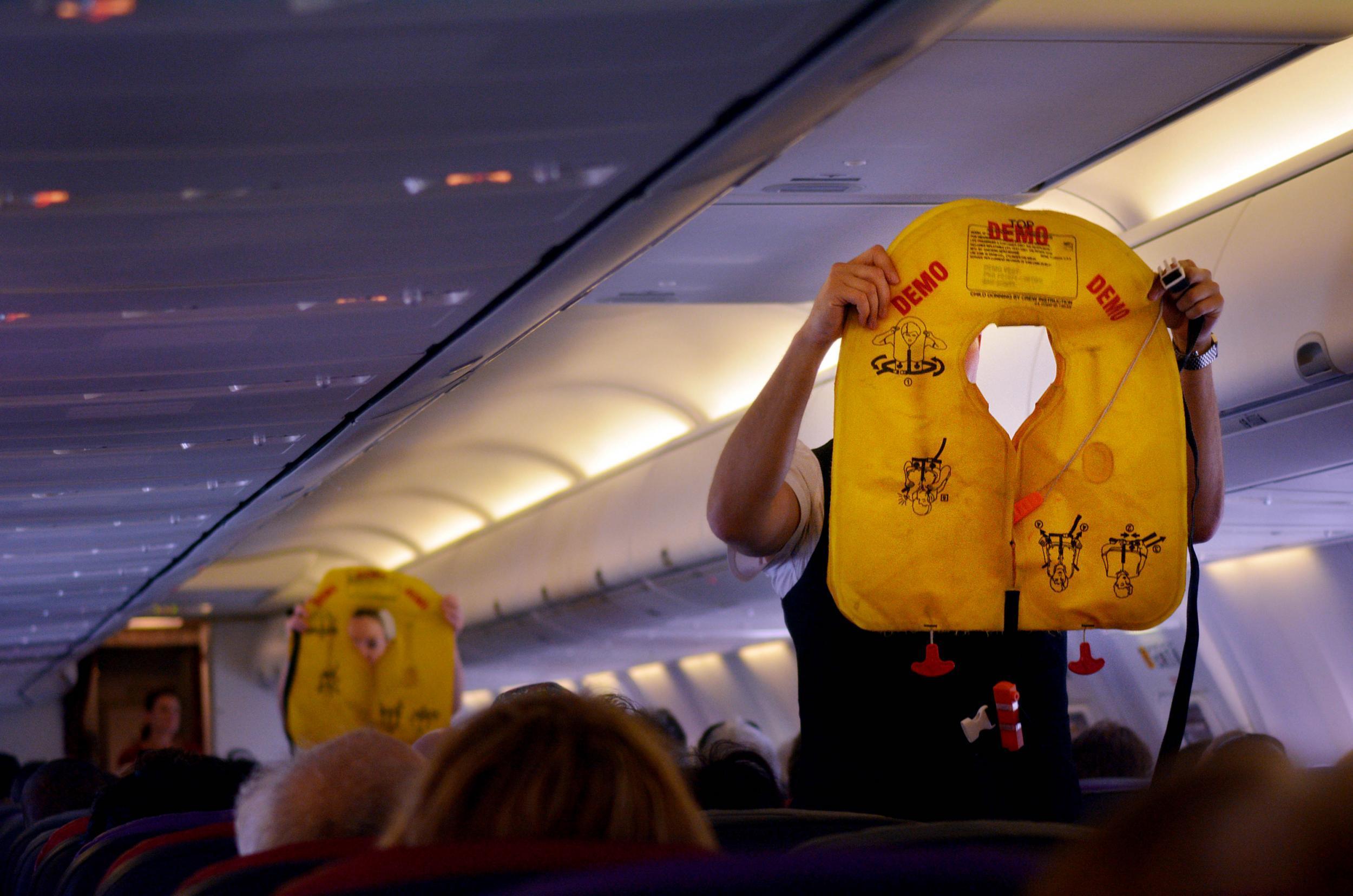It's time to overhaul airline safety demonstrations
With attention spans short and some aspects of in-flight briefings outdated, it's time for a shake-up, says Simon Calder

The aviation industry has worked miracles improving everything from engineering to interpersonal relationships on the flight deck: that’s what I wrote in my business travel column last weekend.
It’s highly unlikely that you or I are ever going to be involved in a serious aviation incident, but if it happens then it is likely to be survivable. It all depends on the evacuation, as Emirates EK521 at Dubai proved earlier this month when it crashed on the runway. All the passengers and crew escaped the burning Boeing, though a firefighter was killed in the blaze.
With the worldwide accident rate at extraordinarily low levels, I argued, it’s the passengers’ turn to do their bit to make flying even safer. Travellers need to sharpen up in preparation for the (very rare) event of an emergency evacuation. Assess in advance where the two nearest emergency exits are. Yell at anyone who reaches for their hand luggage. And during the safety briefing, shush anyone who’s talking, not listening.
I finished writing the column at the departure gate at Osijek airport in Slavonia, eastern Croatia. I pressed “send” and walked through the gate to the plane to Stansted. Five minutes later, and halfway through the safety briefing, the neighbouring passenger started talking to me.
I didn’t feel too bad about shushing her, because she is my wife. But afterwards, we discussed why Charlotte was happy to talk even though the cabin crew were halfway through demonstrating how to don and use a lifejacket “in the unlikely event of landing on water”.
“I already knew that bit,” she said.
Aviation safety purists stress how important it is to listen to every word of the briefing. Plane types vary (though not currently on Ryanair), and there can be subtle but important changes to the wording. For example, after an inflight incident in which the oxygen masks were deployed, some passengers complained that the bag just below the mask didn’t fill with oxygen, and therefore the system wasn’t working. Now, Ryanair passengers are told not to expect the transparent “lung” to inflate.
But if a sensible and safety-conscious person such as my wife feels that she has heard the drill so often that she could put on a life vest with her eyes closed, and still find the whistle to attract attention, then the standard safety briefing is not fit for purpose.
First, is a drill really necessary? Yes. Just because Charlotte has heard the drill a million times before, the 180 other passengers on Ryanair flight 7966 may not have done. Even in the US, where aviation is more commonplace than anywhere else, a government survey found that 18 per cent of the public had never flown.
So already it’s a difficult audience: first-time flyers, anxious passengers, and people who believe they could recite the two-minute talk in their sleep.
The solution: vary the briefing, according to the particular risks for that flight. That bit about the life jackets, for example, when Charlotte’s attention wandered.
I can understand that on the long, oceanic flight from Stansted to Ponta Delgada in the Azores, it makes sense to mention the devices, even though my “whistle to attract attention” may sound feeble in the mid-Atlantic. When I made the journey, the only land on the flightpath between the English Channel and the island of Sao Miguel was the western tip of Brittany. But on the flight from Croatia to London, I timed how long the plane spent flying over bodies of water: less than a minute above Lake Balaton in Hungary, and 14 minutes over the southern end of the North Sea between Ostend and Clacton.
Now, I will be first in the queue for Sully - the forthcoming film about the US Airways captain who, in 2009, successfully ditched his aircraft in the Hudson after a multiple birdstrike disabled both engines. Tom Hanks plays Captain Chesley “Sully” Sullenberger, the man responsible for the “Miracle on the Hudson” in which all 155 aboard were saved. But that was in the most extreme circumstances, immediately after take-off from an airport in the middle of a very crowded city. I estimate that we started the North Sea crossing at about 30,000 feet and ended it at 20,000, and at those heights I imagine the average pilot faced with the loss of power - or an on-board fire - would plan to divert to one of the many available airports on either side of the water rather than gliding into the drink.
I cannot trace any events in modern times in which a lifejacket helped preserve the life of any passenger flying with a UK airline. So, could that element of the briefing be - if you will excuse the phrase - ditched?
Instead, use the time saved to remind passengers why it is important to keep your shoes on during take off and landing: in case you need to run for an exit, and away from the plane, in an evacuation.
Still more radical ideas deserve to be discussed. In advance of the flight, airlines could stipulate sensible footwear (no flip-flops or high heels) as a condition of allowing you on board. Infrequent or first-time flyers could be offered a more in-depth briefing at the departure gate - tempered with some reassurance about the astonishingly good safety record of passenger aviation.
Subscribe to Independent Premium to bookmark this article
Want to bookmark your favourite articles and stories to read or reference later? Start your Independent Premium subscription today.

Join our commenting forum
Join thought-provoking conversations, follow other Independent readers and see their replies